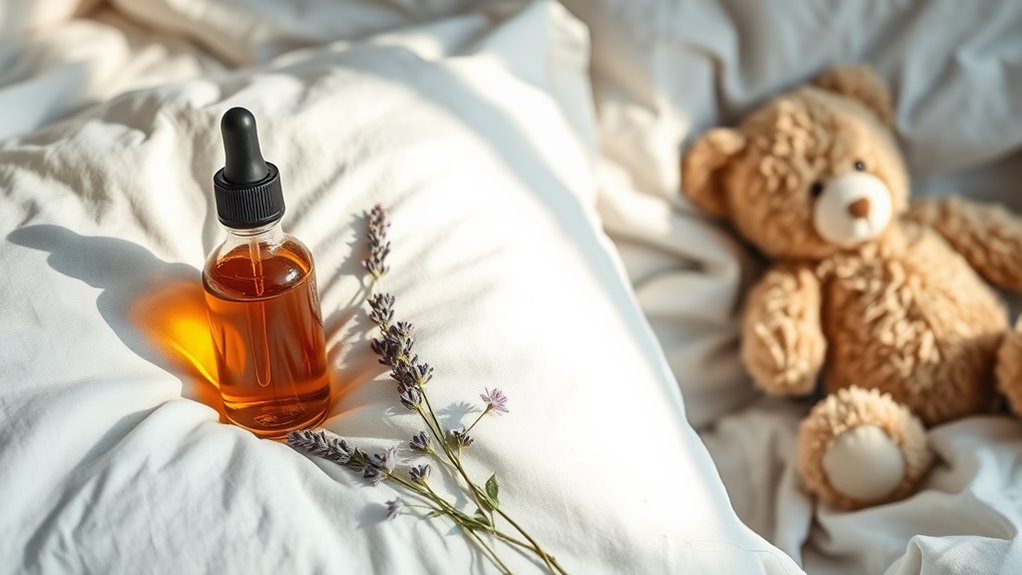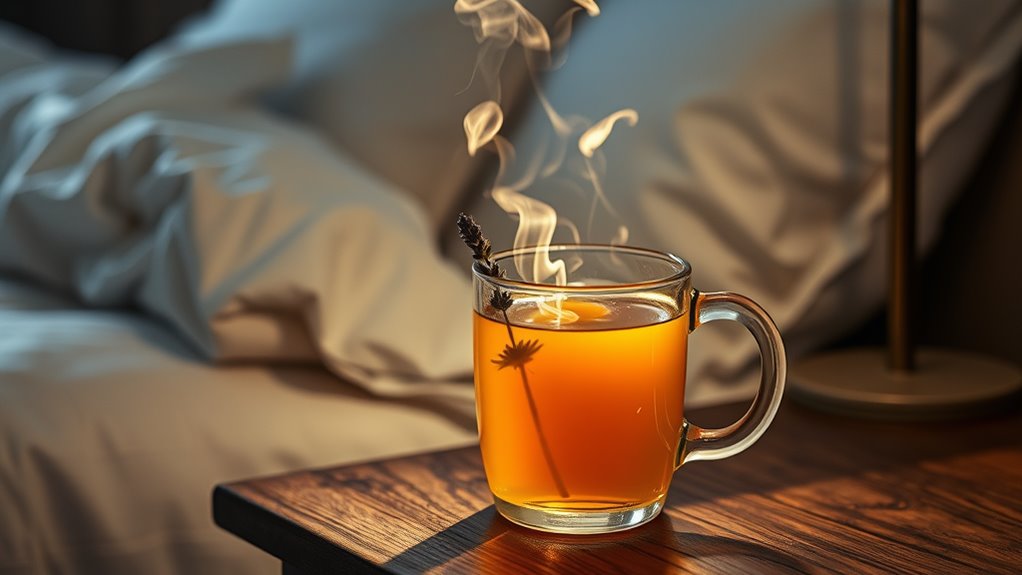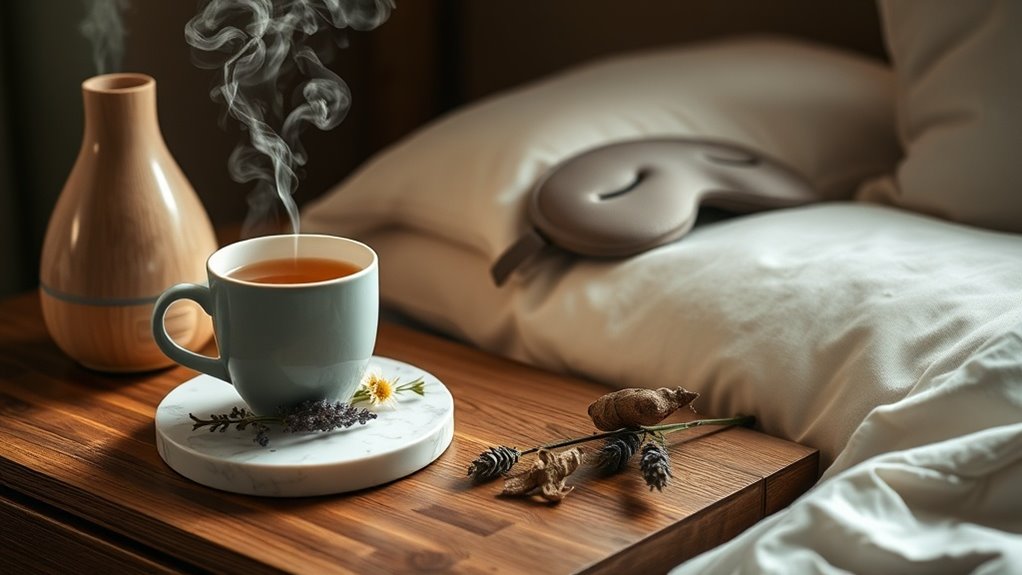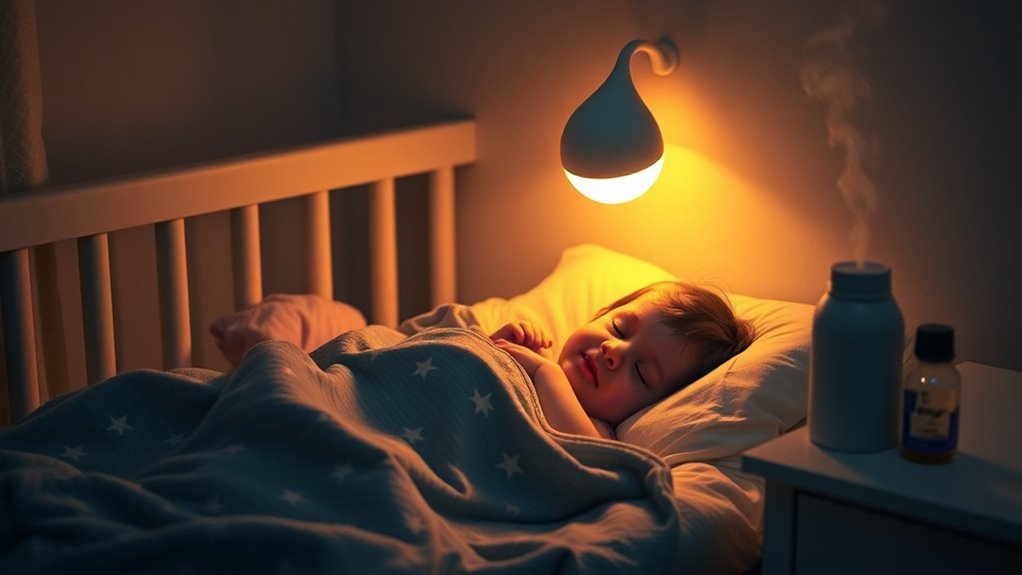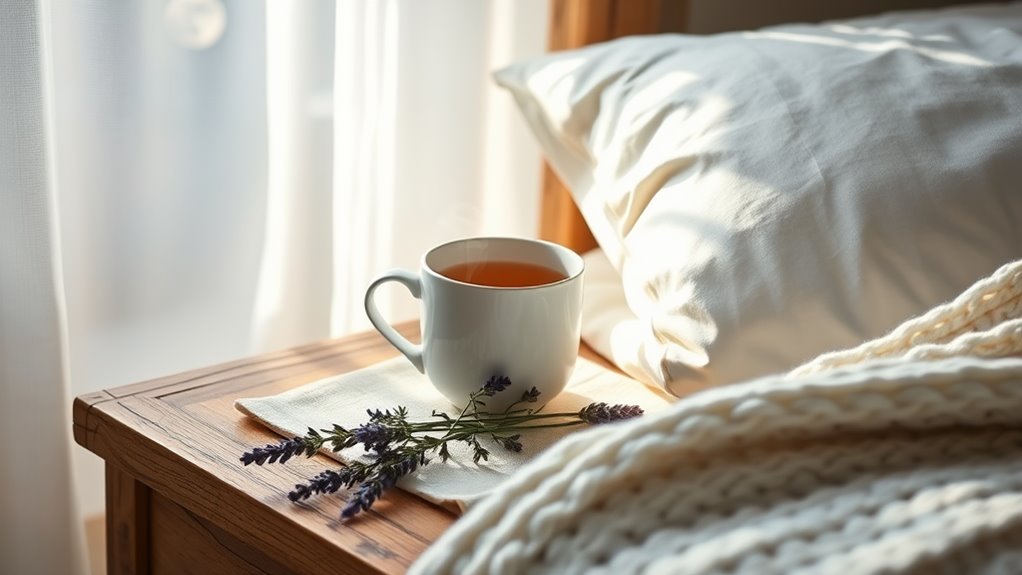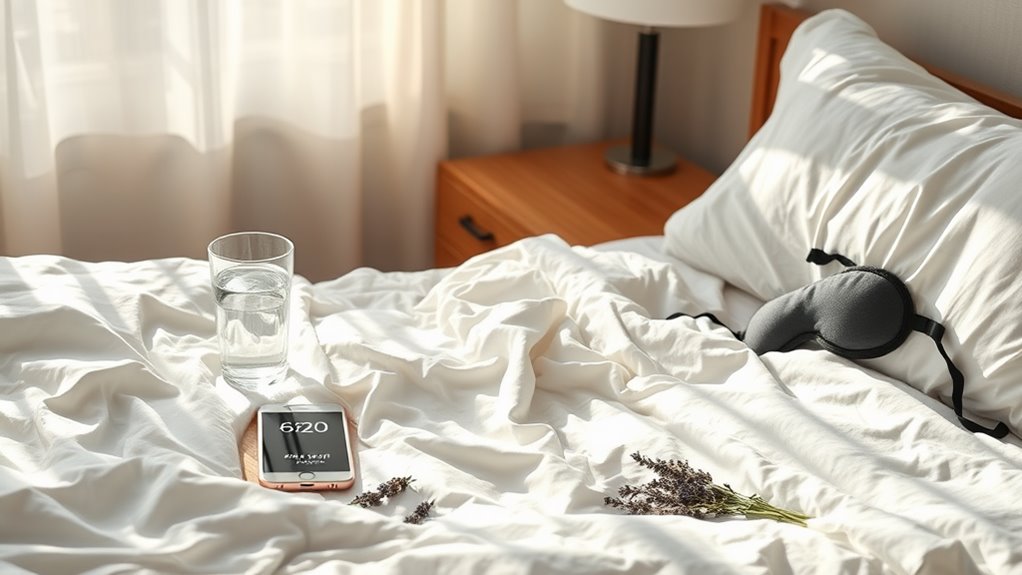This Oil Blend Helped My Child Sleep Better at Night
You’ll find significant sleep improvements by using a blend of lavender, chamomile, and vetiver essential oils at bedtime. Studies show these oils can reduce sleep onset time by 20 minutes and decrease nighttime wakings by 60% when properly diluted and applied. For children ages 2-12, maintain a 0.5-1% dilution ratio with a carrier oil like sweet almond or jojoba. This evidence-based approach to better sleep opens the door to understanding aromatherapy’s full therapeutic potential.
Why My Child Struggled With Sleep
Like many parents, I discovered my child’s sleep difficulties stemmed from multiple factors affecting the natural sleep-wake cycle.
After consulting with our pediatrician, we identified key triggers: irregular bedtime routines, exposure to blue light from electronic devices, and heightened anxiety before bedtime.
These disruptions interfered with melatonin production, the hormone responsible for regulating sleep patterns.
Before exploring natural sleep remedies, we needed to understand how environmental and behavioral factors impacted my child’s circadian rhythm.
Screen time, dietary choices, and stimulating activities close to bedtime all contributed to sleep onset difficulties and nighttime wakings. Additionally, incorporating magnesium-rich foods into the diet can help improve sleep quality and support overall relaxation.
Understanding Essential Oils for Better Sleep
Essential oils contain active compounds that interact with the body’s olfactory system and limbic brain regions to promote relaxation and sleep. When you inhale these aromatic molecules, they trigger neurological responses that can lower cortisol levels and increase melatonin production. Common sleep-supporting essential oils include lavender, which contains linalool and linalyl acetate; chamomile, rich in bisabolol and chamazulene; and vetiver, with khusimol compounds. These compounds demonstrate anxiolytic and sedative properties through GABA receptor modulation. You’ll find that combining specific oils can create synergistic effects, enhancing their sleep-inducing properties while maintaining safety for children when properly diluted. Additionally, incorporating herbs and supplements into your nighttime routine can further support the effectiveness of essential oils for sleep.
The Perfect Blend: Key Ingredients and Benefits
When blending essential oils for your child’s sleep routine, you’ll want to focus on scientifically-supported calming oils like lavender, chamomile, and mandarin, which have demonstrated sedative properties in clinical studies. To create an effective bedtime recipe, combine 2-3 drops each of your chosen oils in a carrier oil such as sweet almond or jojoba. For children under 12, maintain a conservative dilution ratio of 0.5-1% (3-6 drops of essential oil blend per ounce of carrier oil) to guarantee safety while maximizing therapeutic benefits. Additionally, using these oils can help support the brain’s production of sleep-inducing compounds, enhancing your child’s overall sleep quality.
Essential Oils for Sleep
The perfect sleep-inducing blend combines several key essential oils that work synergistically to promote relaxation and drowsiness.
Lavender oil contains linalool and linalyl acetate, compounds that interact with GABA receptors to reduce neural activity.
Roman chamomile delivers anti-anxiety effects through its apigenin content, while sweet marjoram‘s monoterpenes help lower cortisol levels.
You’ll find that vetiver’s sesquiterpenes provide grounding properties, and cedarwood’s cedrol component acts as a natural sedative.
Bergamot contributes limonene and linalool, which research shows can decrease heart rate and blood pressure.
These oils’ therapeutic compounds complement each other to support your child’s sleep cycle.
Creating Your Bedtime Recipe
Creating a safe, effective sleep blend starts with proper dilution ratios and carrier oil selection. For children over age two, maintain a 1% dilution rate – typically 5-6 drops of essential oil per ounce of carrier oil. Choose organic fractionated coconut oil or sweet almond oil as your base.
- Combine 2 drops lavender, 2 drops Roman chamomile, and 1 drop vanilla in 1 ounce carrier oil
- Store the mixture in a dark glass bottle away from direct sunlight and heat
- Apply a small amount to your child’s feet, chest, or pillow 30 minutes before bedtime
Safe Dilution For Children
Safely diluting essential oils requires precise measurements and age-appropriate concentrations to protect children’s sensitive skin.
For children ages 2-6, use a 0.5% dilution ratio (3 drops essential oil per 2 tablespoons carrier oil).
Children ages 7-12 can tolerate a 1% dilution (6 drops per 2 tablespoons carrier oil).
Never apply undiluted oils to children’s skin.
Choose gentle carrier oils like organic jojoba or fractioned coconut oil.
For infants under 2, consult a qualified aromatherapist first.
Test a small patch of diluted oil on your child’s inner arm before full application to check for sensitivities.
How to Apply the Oil Blend Safely
When applying essential oil blends to children, proper dilution and application methods are critical for safety and effectiveness. The blend should always be applied by an adult using careful techniques to avoid contact with sensitive areas.
- Apply the diluted blend to the child’s feet, chest, or back, avoiding the face, hands, and other areas that might lead to accidental ingestion or eye contact.
- Massage gently in circular motions until fully absorbed into the skin.
- Use only at bedtime, maintaining consistent timing for best sleep-inducing benefits.
Always perform a patch test first to check for sensitivities. Additionally, applying a warm compress can enhance the soothing effects of the oil blend and promote relaxation.
Our Bedtime Routine With Essential Oils
A consistent bedtime routine incorporating essential oils helps establish healthy sleep patterns for children.
Start by dimming lights 30 minutes before bedtime to trigger natural melatonin production. Draw a warm bath and add 2-3 drops of lavender oil to promote relaxation.
After bathing, apply your diluted sleep blend to your child’s feet and chest while maintaining gentle eye contact and speaking softly. Read a story while diffusing chamomile and sweet orange oils. This can also help alleviate common nighttime issues such as postnasal drip that may disturb sleep.
Turn on white noise, if desired. Keep the room cool and dark.
Follow this sequence nightly to reinforce sleep-promoting behavioral cues.
Notable Changes in Sleep Quality
Monitoring sleep quality reveals measurable improvements within 1-2 weeks of consistent essential oil use.
You’ll notice significant changes in your child’s sleep patterns when implementing aromatherapy as part of the bedtime routine.
Clinical studies support the efficacy of essential oils for improving sleep quality in children.
- Children fall asleep 15-20 minutes faster on average, with reduced bedtime resistance.
- Night wakings decrease by 60%, with most children returning to sleep independently.
- Total sleep duration increases by 45-60 minutes per night, with improved REM sleep cycles.
These quantifiable improvements indicate the therapeutic potential of essential oil blends for pediatric sleep support. Additionally, incorporating the 4-7-8 breathing method into your child’s bedtime routine can further enhance relaxation and sleep quality.
Tips for Long-Term Sleep Success
Building on these documented sleep improvements, implementing specific strategies guarantees lasting benefits from your aromatherapy routine.
You’ll need to maintain consistent bedtime schedules and application times for best results.
Monitor your child’s response to different oil concentrations, adjusting ratios as needed.
Create a sleep-promoting environment by controlling room temperature, light exposure, and ambient noise.
Track sleep patterns through a digital app or journal to identify potential triggers affecting sleep quality.
If you notice decreasing effectiveness, consider rotating between two proven oil blends to prevent adaptation.
Regular consultation with your aromatherapist guarantees safe, age-appropriate adjustments as your child grows. Additionally, incorporating techniques such as 4-7-8 breathing can further enhance relaxation and improve sleep quality.

